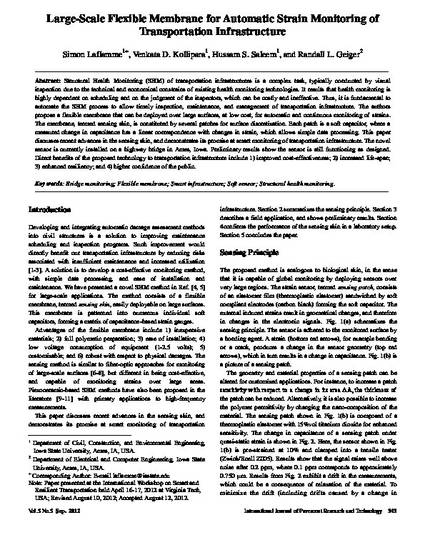
Structural Health Monitoring (SHM) of transportation infrastructures is a complex task, typically conducted by visual inspection due to the technical and economical constrains of existing health monitoring technologies. It results that health monitoring is highly dependent on scheduling and on the judgment of the inspectors, which can be costly and ineffective. Thus, it is fundamental to automate the SHM process to allow timely inspection, maintenance, and management of transportation infrastructure. The authors propose a flexible membrane that can be deployed over large surfaces, at low cost, for automatic and continuous monitoring of strains. The membrane, termed sensing skin, is constituted by several patches for surface discretization. Each patch is a soft capacitor, where a measured change in capacitance has a linear correspondence with changes in strain, which allows simple data processing. This paper discusses recent advances in the sensing skin, and demonstrates its promise at smart monitoring of transportation infrastructure. The novel sensor is currently installed on a highway bridge in Ames, Iowa. Preliminary results show the sensor is still functioning as designed. Direct benefits of the proposed technology to transportation infrastructure include 1) improved cost-effectiveness; 2) increased life-span; 3) enhanced resiliency; and 4) higher confidence of the public.
Available at: http://works.bepress.com/randall-geiger/1/

This is an article from International Journal of Pavement Research & Technology, 5(5)2012; 343-346. Posted with permission.